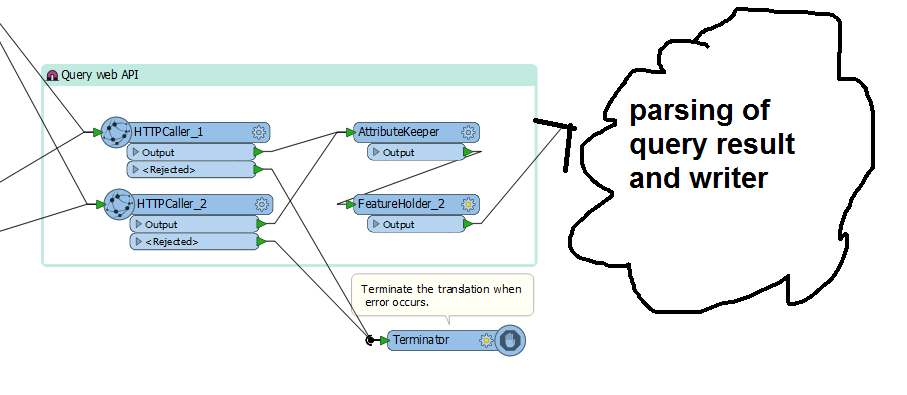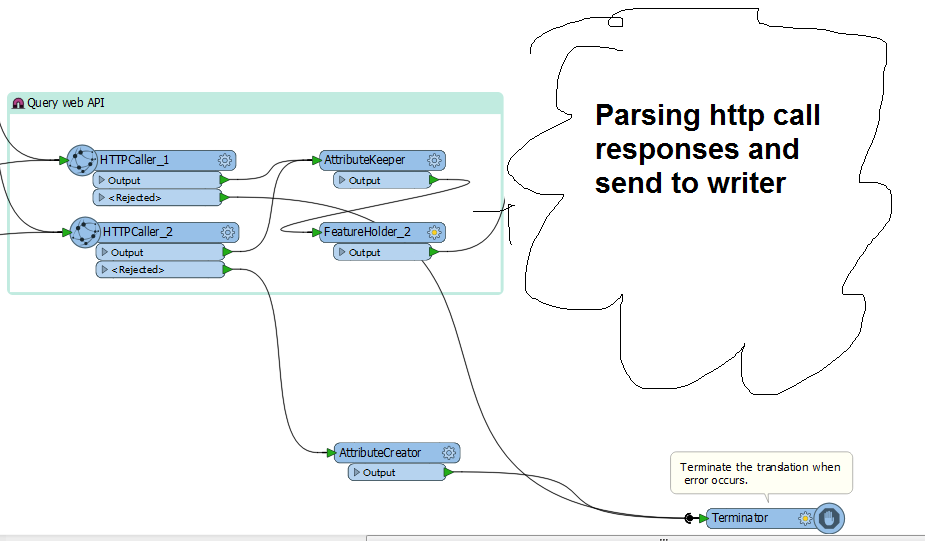Hi! I have a workspace with two HTTPCaller transformers. Both of their output ports are piped to some logic to generate features and write to database. There is a FeatureHolder between the HttpCallers and the writers, such that nothing will be written before all the HTTP calls are finished (either complete or error).
Both of the HTTPCaller <reject> ports are piped to a Terminator transformer. I want to make sure the workspace will terminate without any feature written to database, if any of the HTTP calls fails. When I test ran the workspace with some failure in HTTP calls, it did what I want. However, because I couldn't find instruction to help me make sure Terminator will always be executed first, because conceptually when a rejected feature is travelling towards the Terminator, another feature may come out of FeatureHolder and race towards the writer.
Any way I can make sure that?
Thank you!









